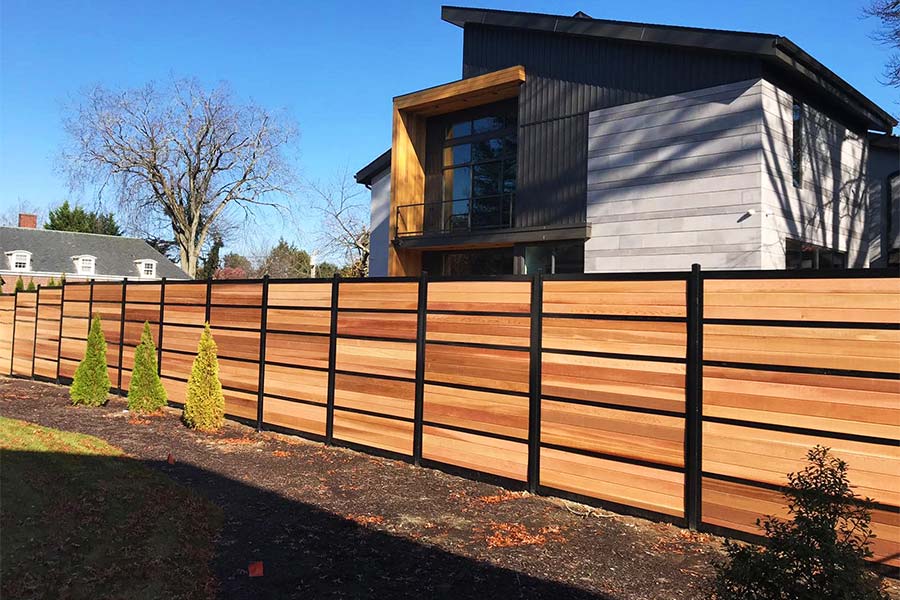All Categories
Featured

Your fencing is an essential component of your property, providing security, privacy, and aesthetic allure. However, it is frequently revealed to the aspects, and in time, weather-related damage can take its toll. Whether it's the rough sun, strong winds, heavy rainfall, or freezing temperature levels, the weather condition can cause deterioration, warping, decaying, and fading. The good news is, there are a number of methods you can carry out to shield your fencing and lengthen its life.
- Choose the Right Material. The initial step in protecting your fence from weather-related damage is to pick the ideal product for your environment. Some materials are extra resistant to the elements than others.
Wooden Fencings: While traditional wood fencings use an all-natural, eye-catching appearance, they are especially at risk to water rot, pest, and damages infestation. If you select wood, choose pressure-treated lumber or timber types that are much more resistant to wetness, such as cedar or redwood. Plastic Fencings: Vinyl is a low-maintenance choice that stands up to fading, splitting, and warping. It's likewise unsusceptible to rot and insects, making it ideal for locations with high moisture or exposure to rain. Steel Fences: Aluminum and wrought iron fencings are durable and resistant to weathering. They can rust if subjected to moisture for extended durations. Go with a powder-coated or galvanized metal fencing to decrease the risk of deterioration. Composite Fences: These are made from a mix of timber fibers and plastic, providing the most effective of both globes-- toughness and a natural appearance. Compound fences are immune to dampness, fading, and decomposing, making them great for environments with regular rain or snow. 2. Apply Safety Coatings. No matter of the material, using a safety layer can aid secure your fencing from weather condition damage.

Wood Fences: A good-quality discolor or sealer can help protect your wood fencing from moisture, UV rays, and pests. These coverings create a barrier that avoids water from seeping into the wood and triggering rot. You must use a fresh layer of stain or sealer every couple of years, depending on your climate and the degree of direct exposure to rainfall and sunshine. Vinyl Fencings: Although plastic fencings are normally resistant to weathering, they can still struggle with discoloration as a result of the sunlight's UV rays. You can make use of specialized vinyl cleaners or UV protectants to preserve the color and look of your fencing. Metal Fencings: For metal fences, consider using a rust-resistant primer and a layer of paint made for outside use. Powder finishing is another exceptional choice for metal fencings, as it creates a sturdy, weather-resistant surface that withstands corrosion and deterioration. 3. Normal Cleansing and Upkeep. Maintaining your fencing on a regular basis is vital to stopping damage from the elements. Dust, leaves, and various other debris can construct up on your fencing, which can cause discoloration, mold, and mold over time.
Wood Fences: Tidy your wooden fence every six months with a moderate detergent solution or a stress washer (on a reduced setting) to remove dirt and crud. Watch out for early indicators of rot, especially at the base of the fencing blog posts where dampness tends to accumulate. Vinyl Fences: Vinyl fencings are very easy to tidy with soap and water. If you notice mold or mildew, use a mixture of vinegar and water to carefully scrub the affected locations. Stay clear of harsh chemicals that might damage the surface. Metal Fencings: On a regular basis clean steel fencings with a soft towel or sponge to remove rust-causing debris. For functioned iron fencings, think about applying a rust-inhibiting item to avoid deterioration. 4. Proper Installment and Positioning. Appropriate installment of your fencing can go a lengthy way in protecting it from weather-related damages. Make sure that your fencing is safely anchored which articles are set deep sufficient right into the ground to stop shifting throughout hefty winds or tornados. If your fencing is subject to hefty winds, installing supporting at bottom lines can offer additional assistance.
Additionally, take into consideration the positioning of your fencing. Plant bushes or trees strategically around your fencing to provide some natural security from harsh winds, intense sunshine, or motoring rainfall if feasible. Nonetheless, beware not to plant also near the fencing, as origins can harm or shift messages gradually.
- Address Tornado Damage Rapidly. Storms, specifically those with high winds or hail, can cause prompt damage to your fencing. After a storm, evaluate your fencing for damaged sections, leaning articles, or dropped debris.
- Winterize Your Fencing. Cold temperatures and ice can be specifically harming to wood fences. To avoid this, make certain that the base of your fencing posts is raised and not resting in pooled water.
Conclusion. Weather-related damages is an unpreventable part of possessing a fence, yet with the right precautions and regular upkeep, you can significantly prolong the life of your fence. Select durable products suited for your environment, use protective finishings, clean frequently, and guarantee proper installment. With these steps, you can protect your fencing from the elements and preserve its appearance and capability for many years ahead.
Latest Posts
Discover Save Big on Car Maintenance with Montclare Auto Repair’s Special Deals
Published en
1 min read
Experience Your Financial Partner at WyHy – Wyoming’s Best Banking Choice for Your Money Goals
Published en
1 min read
Discover WyHy Federal Credit Union – Financial Freedom for Your Goals
Published en
1 min read
More
Latest Posts
Discover Save Big on Car Maintenance with Montclare Auto Repair’s Special Deals
Published May 24, 25
1 min read
Experience Your Financial Partner at WyHy – Wyoming’s Best Banking Choice for Your Money Goals
Published May 24, 25
1 min read
Discover WyHy Federal Credit Union – Financial Freedom for Your Goals
Published May 24, 25
1 min read